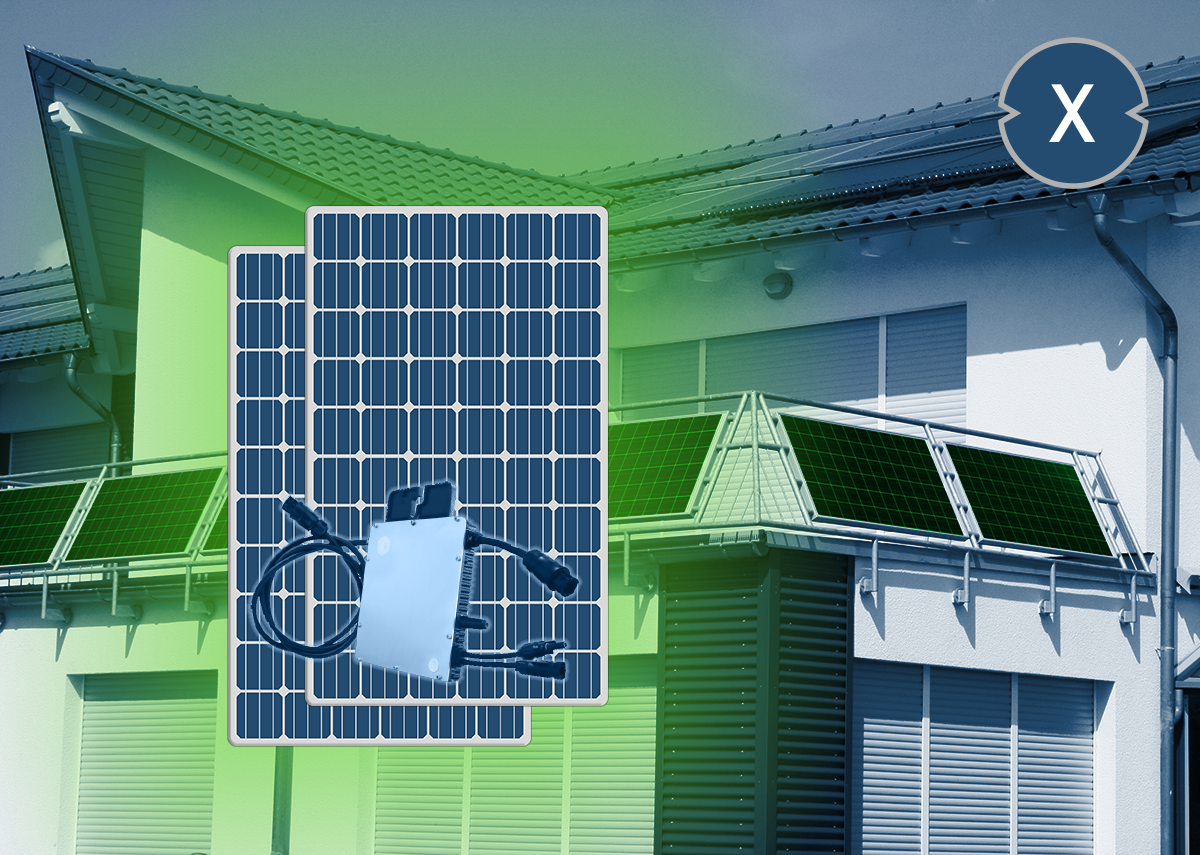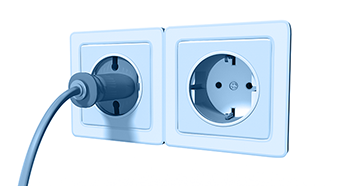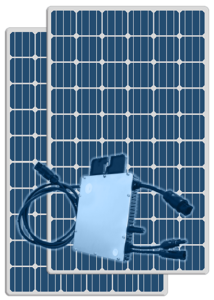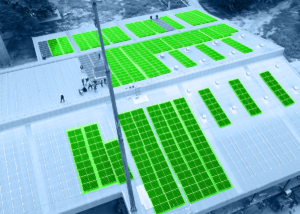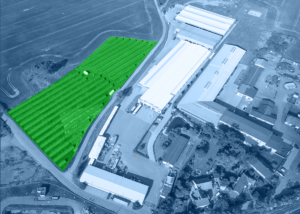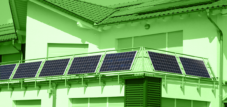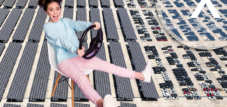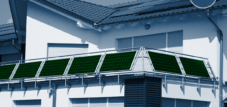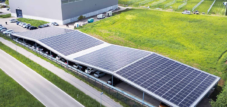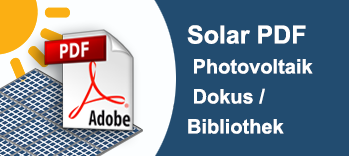PV / Solar & Buying Guide: Ready-to-plug-in mini PV system 600 / 800 watts / VA and more – purchase recommendation
Language selection 📢
Published on: September 11, 2022 / update from: September 11, 2022 - Author: Konrad Wolfenstein
Mini PV systems - balcony power plants - balcony solar - balcony PV systems - plug-in PV systems - plug & play solar - guerrilla PV - plug-in solar devices
Approval-free and plug-in mini PV systems are small solar systems with a maximum of 2 solar modules and inverters with an output power of up to 600 VA (Germany) or 800 VA (EU regulation). They can be connected directly to a Schuko socket or to your own private circuit via an appropriate energy plug device.
The background: What you should know about it
On April 14, 2016, the EU Commission issued a regulation establishing a network code with network connection regulations for electricity generators (VO (EU) 2016/631).
On May 17, 2016, the EU regulation establishing a network code with network connection regulations for electricity generators (VO (EU) 2016/631) came into force.
As a regulation, these legal acts are binding for all affected EU member states and have direct effect in Germany without the need for implementation into national law or national regulations.
Article 5 (2a) of this regulation specifies a maximum capacity of at least 0.8 kW or 800 watts for electricity generation systems.
In Germany, this regulation was implemented at the national level through the Electrotechnical Properties Verification Ordinance (NELEV). It regulates the procedures for proving compliance with the electrical properties of energy systems within the meaning of the Energy Industry Act.
“Operators of generation plants must demonstrate to the responsible network operator as part of the operating license procedure in accordance with Article 29 of Regulation (EU) 2016/631 that the general minimum technical requirements in accordance with Section 19 of the Energy Industry Act are met.”
The adoption of the NELEV is possible due to the national scope for action granted to the member states in Articles 15, 16 and 32 of EU Regulation 2016/631.
The VDE, in turn, defines the rules for technology as to how the NELEV evidence must be provided so that the electrical properties of energy systems are adhered to in the sense of the Energy Industry Act.
Briefly about DKE, VDE, DIN
In Germany there is the German Commission for Electrical Engineering Electronics Information Technology (DKE), which is responsible for developing standards, norms and safety regulations. As a German member of the international and European organizations for the standardization of electrical engineering, the DKE represents German interests in the development and further development of international and European standards to reduce trade barriers and open up markets worldwide.
- The DKE is an organ of the German Institute for Standardization (DIN) and the
- Association of Electrical Engineering Information Technology eV (VDE).
VDE is neither mandatory nor a legal basis
The VDE regulations also specify the standards for, among other things, the perfect electrical properties of energy systems. However, the application is not connecting! The VDE standards, in turn, are considered generally recognized rules of technology and have a quasi-legally binding status.
More about this here: DKE – questions and help
“The application of a standard is generally voluntary. A decision by the 1998 decision of the Federal Court of Justice from 1998 has stated that norms are not fundamentally mandatory. According to this, standards are considered a private technical regulation with a recommendation character that does not bindingly determine the generally “recognized rules of technology”. This means that you can basically deviate from the technical requirements of a standard . If a solution other than the fact described in the standard is implemented, the burden of proof lies with the person responsible in the event of damage. He must be able to explain that the technical execution he chose is the same or better than the stipulations of the norm . ”
The CE requirement!
Many products require CE marking before they can be sold in the EU. The CE mark is an indication that a product has been tested by the manufacturer and that it meets all EU-wide requirements for safety, health and environmental protection. It is mandatory for all products manufactured worldwide and marketed in the EU.
With the CE marking, the manufacturer, distributor or EU authorized representative declares in accordance with Regulation (EC) No. 765/2008 "that the product complies with the applicable requirements laid down in the Community harmonization legislation governing its affixing." (and " that he accepts responsibility for the conformity of the product with all the requirements applicable to its attachment contained in the relevant Community harmonization legislation."
The CE marking was created primarily to ensure safe products for the end consumer within the European Economic Area, including the European Union (EU). The CE marking is also known as a “passport” for the European internal market.
What is the difference between CE and GS?
The GS mark (Tested Safety) is still the only legally regulated test mark in Europe for product safety.
The GS mark is a voluntary certification mark for technical devices. It indicates that the devices comply with German and, if applicable, European safety requirements for such devices. The main difference between the GS mark and the CE mark is that compliance with European safety requirements is tested and certified by a state-recognized independent body . The GS mark is based on the German Product Safety Act (ProdSG).
The CE mark, on the other hand, is awarded for signing a declaration that the product complies with European legislation.
The CE marking is required for certain products, but “only” is an explanation from the manufacturer or tradition that he complies with all European requirements (guidelines and/or regulations). All other characters such as Enec, VDE, ÖVE, TÜV, BG are private signs of individual test or certification points or agreements between test homes.
EU: Network rules should apply from 800 watts - not in Germany!
With Article 5, Paragraph 2, Point A “Determination of the Significance” (VO (EU) 2016/631), the EU Commission has determined which performance size the regulation should apply. The decisive factor is not the input power (DC) of the energy -generating solar modules, but the output power (AC) of the inverter.
This means that up to this watt output, everyone can decide for themselves how to bring their electricity generation into the home network without having to seek professional help, as long as the devices used (solar modules and inverters) meet the legal requirements.
However, the trivial limit of 800 watts granted by the EU does not exist in Germany, as Regulation (EU) 2016/631 is implemented in this country by the NELEV, which does not provide for a trivial limit. Plug-in PV systems always require registration in Germany!
👉🏼 However, with the new regulation of VDE-AR-N 4105, a possibility was created that allows mini PV systems up to a total output of 600 watts to be registered with the network operator yourself, instead of through a qualified electrician as was previously the case. Most network operators provide a registration contact form on their website without much bureaucratic effort.
👉🏼 It is also stipulated that consumers must register their mini PV systems via the Federal Network Agency's market master data register.
Anything beyond that, only a qualified electrician with knowledge of building installation and PV system technology may connect a plug-in photovoltaic system. It checks whether the power line is designed for power feed-in. Also the corresponding requirements for cable dimensioning, connection type and protective devices.
In addition to Switzerland, the 800 watt regulation applies e.g. B. in the EU member states Austria and the Netherlands.
Cable fire if the power line is overloaded?
In Germany, up to 16 amps are used to protect against overcurrent. The mains voltage in almost all of Europe is 230 volts with a frequency of 50 Hertz. This results in a maximum output of 3,680 watts (230 volts x 16 amps). An enormous number of current collectors would be necessary that would exceed 16 amps and the fuse would intervene.
If you now connect a ready-to-plug mini PV system of 600 watts to the house circuit, a total of 4,280 watts or 18.6 amps are available for the various power collectors (household appliances) to draw power. Even with outdated power lines where only 13 or even 10 amps are protected, there is no risk of a cable fire if 600 watts more are available for power consumption and, in extreme cases, too many power collectors are overloaded.
In its regulation for electricity generators (VO (EU) 2016/631), the EU Commission even sees up to 800 watts as non-problematic and insignificant (trivial).
If you want to be sure that the system is VDE-compliant, you can have a qualified electrician check the actual line load and thus use a higher output from a plug-in mini PV system, provided that the qualified electrician's check allows this.
Schuko or energy plug device?
Schuko is an acronym for protective contact and refers to a system of plugs and sockets that is mainly used in Europe. This system is also available internationally as a plug type F.
In countries such as Switzerland, Austria or the Netherlands, operating plug-in mini PV systems with Schuko plugs is no problem. To date, I am not aware of any deaths, fires or personal injuries associated with balcony solar systems that are operated with the protective contact plugs. In Germany, too, many people use the Schuko connection system for their mini PV systems.

Wieland socket for balcony power plant | Balcony solar | Ready-to-plug mini solar/PV system – Image: Xpert.Digital
Nevertheless, the VDE “does not hold the connection by Schuko to be a suitable way”. A compromise was found with the front standard DIN VDE V 0100-551-1, which provides for an energy-plug device (Wieland socket).
This in turn involves additional costs for something that the actual EU regulation considers to be non-problematic and insignificant. And even for up to 800 watts! The cost of such an installation with the Wieland socket is 250-300 euros and must be carried out by a qualified electrician with their own supply line.
The following line of thought needs to be mentioned here
VDE standards are neither a must nor legal basis . Therefore, the application is generally voluntary. You therefore only have a recommendation character, see also above under “VDE is neither a must nor legal basis”.
👉🏼 If the burden of proof lies with the person responsible in the event of an individual deviation from the standard, i.e. operation with protective contact plugs instead of the Wieland socket, then the EU regulation (VO (EU) 2016/631), which just states, can be used as a basis , that anything below 800 watts is not significant and therefore insignificant. This EU regulation is a powerful piece of evidence, as is the unproblematic classification in other EU countries such as Austria and the Netherlands. Likewise in Switzerland.
Nevertheless, the last word has not yet been spoken here in Germany regarding the Schuko connection system. There is currently an objection procedure for the relevant preliminary standard.
Suitable for:
The Schuko connector can become the norm. For example, PV magazines say: “However, owners of photovoltaic balcony modules do not have to wait. The future standard is not relevant for the clashes with network operators that plug-in solar users have to keep again and again. According to a judgment of the clearing position, the network providers should not already ban the connection via a Schuko connector . ”
More about it here:
The limit: Plug-in mini PV systems with a maximum of 2 solar modules
For PV systems with or without a plug-in device of more than 600 watts or 800 watts, an electrician or specialist company must always be consulted.
German building law stipulates that solar modules with a glass cover area may not exceed 2 m². The basis for the building permit is the building regulations or state building regulations of the respective federal state, because the authority for building regulations lies with the respective federal states. These are based on the model regulations that are passed annually at the conference of building ministers.
More about it here:
The actually economically interesting solar modules, which are just under 2 m² in size, have a power volume of 375 watts to 420 watts, which can be used without any problems and in an uncomplicated manner for a plug-in mini PV system. With this solar module size, much more output is not possible.
In addition, there is the required inverter with two connections for the solar modules and the all-important output power for connection to the private power grid.
In the following comparisons and examples, the output power is limited to 800 watts. Of course, much more is possible here and can be requested from me if necessary.
600 watt / VA balcony solar, plug-in mini PV system
Hoymiles HM-600 inverter
- max. 2 x 380 watt input power (DC)
- max. 600 VA output power (AC)
Recommended solar modules :
- 2 x Viessmann – VITOVOLT_M375 AG – 375 watts (currently available)
- 2 x Jinko – JKM375M-6RL3-B – 375 watts (currently available)
- 2 x PhonoSolar – PS380M4-20/UH(30MM)BW – 380 watts (currently available)
- 2 x Jinko – JKM 380M-6RL3-B_35MM – 380 watts (currently available)
Recommended guide price:
900 € (Shipping costs approx. 80 €)
700 watt / VA balcony solar, plug-in mini PV system
Inverter Hoymiles HM-700 (currently available)
- max. 2 x 440 watt input power (DC)
- max. 700 VA output power (AC)
Recommended solar modules :
- 2 x Jinko – JKM420N-54HL4-B – 420 watts (currently not available)
- 2 x Jinko – JKM415N-54HL4-B – 415 watts (currently not available)
- 2 x PhonoSolar – PS415M4-22/WH – 415 watts (currently available)
- 2 x WattPower – WP-410/G8-108H W – 410 Watt (currently available)
- 2 x Kensol – KS410MB5-SBS – 410 watts (currently available)
- 2 x Jinko – JKM410N-54HL4-B – 410 watts (currently available)
- 2 x SHARP – NU-JC410 – 410 watts (currently available)
- 2 x Kensol – KS405MB5-SBS – 405 watts (currently available)
Recommended guide price:
1000 € (Shipping costs approx. 80 €)
800 watt / VA balcony solar, plug-in mini PV system
Hoymiles HM-800 inverter
- max. 2 x 500 watt input power (DC)
- max. 800 VA output power (AC)
Recommended solar modules :
- 2 x Jinko – JKM420N-54HL4-B – 420 watts (currently not available)
- 2 x Jinko – JKM415N-54HL4-B – 415 watts (currently not available)
- 2 x PhonoSolar – PS415M4-22/WH – 415 watts (currently available)
- 2 x WattPower – WP-410/G8-108H W – 410 Watt (currently available)
- 2 x Kensol – KS410MB5-SBS – 410 watts (currently available)
- 2 x Jinko – JKM410N-54HL4-B – 410 watts (currently available)
- 2 x SHARP – NU-JC410 – 410 watts (currently available)
- 2 x Kensol – KS405MB5-SBS – 405 watts (currently available)
Recommended guide price:
1100 € (Shipping costs approx. 80 €)
Optionally possible
- Alternative micro inverters such as B. Envertech or APSystems
- WiFi energy meter
- Mounting systems for balconies, facades and horizontal installation surfaces
- Connection cable or energy plug device
📣 Ready-to-plug mini PV systems for industry, retail and municipalities
Everything from a single source, specially designed for solar solutions for large parking areas. You refinance or counterfinance into the future with your own electricity generation.
🎯 For solar engineers, plumbers, electricians and roofers
Advice and planning including a non-binding cost estimate. We bring you together with strong photovoltaic partners.
👨🏻 👩🏻 👴🏻 👵🏻 For private households
We are positioned across regions in German-speaking countries. We have reliable partners who advise you and implement your wishes.
- Warehouses, production halls and industrial halls with their own power source from a photovoltaic roof system - Image: NavinTar|Shutterstock.com
- Industrial plant with its own power source from an outdoor photovoltaic system - Image: Peteri|Shutterstock.com
- Plan solar systems with photovoltaic solutions for freight forwarding and contract logistics
- B2B solar systems and photovoltaic solutions & advice
- Plan photovoltaics for warehouses, commercial halls and industrial halls
- Industrial plant: Plan a photovoltaic open-air system or open-space system
- Plan solar systems with photovoltaic solutions for freight forwarding and contract logistics
- B2B solar systems and photovoltaic solutions & advice
That’s why Xpert.Solar for plug-in mini PV systems – advice and planning!
I would be happy to serve as your personal advisor.
You can contact me by filling out the contact form below. I will get back to you right away
I'm looking forward to our joint project.
Xpert.Digital – Konrad Wolfenstein
Xpert.Digital is a hub for industry with a focus on digitalization, mechanical engineering, logistics/intralogistics and photovoltaics.
With our 360° business development solution, we support well-known companies from new business to after sales.
Market intelligence, smarketing, marketing automation, content development, PR, mail campaigns, personalized social media and lead nurturing are part of our digital tools.
You can find out more at: www.xpert.digital – www.xpert.solar – www.xpert.plus



